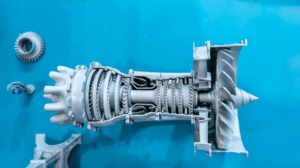
Brazilian Jiu-Jitsu (BJJ) is a dynamic martial art that focuses on ground fighting and submission holds. Whether you are a seasoned practitioner or a beginner, incorporating specific workouts into your routine can significantly enhance your ground game. This article will explore eight effective jiu jitsu workouts that can help you develop strength, flexibility, endurance, and technical skills. Additionally, we will discuss the importance of wearing appropriate gear, such as long sleeve rash guards and short sleeve rash guards, during training sessions.
1. Strength Training for BJJ
Strength training is essential for improving your overall performance in jiu jitsu. It helps build muscle, increases power, and enhances endurance, allowing you to control your opponent more effectively. Focus on compound movements that target multiple muscle groups, such as:
- Deadlifts: Deadlifts strengthen your lower back, glutes, and hamstrings, which are crucial for maintaining a strong base and executing explosive movements.
- Squats: Squats enhance leg strength and stability, aiding in powerful takedowns and guard passes.
- Pull-ups: Pull-ups develop upper body strength, particularly in the back and shoulders, which are essential for maintaining grips and executing chokes.
Incorporate these exercises into your routine two to three times per week, with a focus on proper form and gradual progression.
2. High-Intensity Interval Training (HIIT)
High-Intensity Interval Training (HIIT) is an excellent way to boost cardiovascular endurance and improve your ability to maintain a high level of intensity during matches. HIIT involves alternating between short bursts of intense exercise and periods of rest or low-intensity exercise. A typical HIIT session might include:
- 30 seconds of burpees
- 30 seconds of rest
- 30 seconds of sprints
- 30 seconds of rest
- 30 seconds of kettlebell swings
- 30 seconds of rest
Repeat this cycle for 20-30 minutes. HIIT not only improves your cardio but also enhances your ability to recover quickly between rounds, giving you an edge in competitions.
3. Mobility and Flexibility Training
Mobility and flexibility are crucial for executing techniques with precision and avoiding injuries. Incorporate the following exercises into your routine to enhance your range of motion:
- Dynamic Stretching: Perform dynamic stretches such as leg swings, arm circles, and hip rotations to warm up your muscles before training.
- Yoga: Yoga improves flexibility, balance, and mental focus. Poses like the downward dog, pigeon pose, and triangle pose are particularly beneficial for jiu jitsu practitioners.
- Foam Rolling: Use a foam roller to release muscle tension and improve tissue quality. Focus on areas such as the calves, hamstrings, and upper back.
Incorporating mobility and flexibility training three to four times a week will help you move more fluidly and reduce the risk of injuries.
4. Grip Strength Training
Grip strength is vital in jiu jitsu for maintaining control over your opponent and executing submissions. Incorporate these exercises to enhance your grip:
- Farmer’s Walk: Hold a heavy weight in each hand and walk for a set distance or time. This exercise strengthens your grip, forearms, and shoulders.
- Towel Pull-ups: Perform pull-ups using a towel draped over a bar. This variation increases the difficulty and targets your grip more effectively.
- Dead Hangs: Hang from a pull-up bar for as long as possible to build endurance in your grip and forearms.
Aim to include grip strength exercises in your routine two to three times per week.
5. Core Training
A strong core is essential for maintaining balance, executing techniques, and generating power in jiu jitsu. Focus on the following core exercises:
- Planks: Hold a plank position for as long as possible to build endurance in your core muscles.
- Russian Twists: Sit on the ground with your knees bent, lean back slightly, and twist your torso from side to side while holding a weight or medicine ball.
- Leg Raises: Lie on your back with your legs straight and lift them towards the ceiling, then lower them back down without touching the ground.
Incorporate core exercises into your routine three to four times a week for optimal results.
6. Drilling Techniques
Drilling is essential for developing muscle memory and refining your techniques. Set aside dedicated time to practice specific moves, such as:
- Guard Passes: Focus on different guard passes, such as the knee slide, toreando pass, and double under pass. Drill each technique repeatedly to improve your precision and timing.
- Sweeps: Practice sweeps from various guard positions, including the scissor sweep, butterfly sweep, and flower sweep. Drilling sweeps will help you transition from defense to offense effectively.
- Submissions: Drill submissions like the armbar, triangle choke, and kimura from various positions. Repetition is key to mastering these techniques and executing them with confidence.
Drilling should be a part of every training session to ensure continuous improvement and mastery of techniques.
7. Positional Sparring
Positional sparring is a focused way to improve specific aspects of your game. Instead of starting from a neutral position, begin in a specific position and work on escaping, defending, or attacking from there. Some examples include:
- Mount: Start with one person in mount and work on escaping or maintaining control.
- Back Control: Begin with one person having back control and practice escaping or securing a submission.
- Guard: Start in various guard positions, such as closed guard, open guard, or half guard, and work on passing, sweeping, or submitting.
Positional sparring allows you to develop skills in particular areas and build confidence in different positions.
8. Live Sparring (Rolling)
Live sparring, or rolling, is the most effective way to apply what you’ve learned in a realistic setting. During rolling, you’ll face resistance from your training partners, allowing you to test your techniques and improve your timing and strategy. Keep these tips in mind during sparring sessions:
- Set Goals: Focus on specific goals for each session, such as working on a particular technique or improving your defense.
- Stay Calm: Maintain a calm and focused mindset, even when under pressure. This will help you make better decisions and conserve energy.
- Analyze Your Performance: After each session, reflect on what worked well and what needs improvement. Use this information to adjust your training and continue progressing.
Rolling should be a regular part of your training routine, as it provides invaluable experience and helps you develop a well-rounded game.
Importance of Proper Gear: Long Sleeve Rash Guards and Short Sleeve Rash Guards
Wearing appropriate gear is crucial for comfort, hygiene, and performance during jiu jitsu workouts. Rash guards, in particular, play a significant role in protecting your skin and providing support. Here’s why long sleeve rash guards and short sleeve rash guards are essential:
Long Sleeve Rash Guards
- Protection: Long sleeve rash guards offer extensive coverage, protecting your skin from mat burns, scratches, and potential infections.
- Compression: They provide compression, which supports muscle recovery and reduces fatigue.
- Thermal Regulation: Long sleeve rash guards help regulate your body temperature, keeping you warm during cold training sessions and wicking away sweat to keep you cool.
Short Sleeve Rash Guards
- Flexibility: Short sleeve rash guards offer greater flexibility and range of motion, making them ideal for high-intensity training and sparring.
- Breathability: They provide better ventilation, which is beneficial during hot and intense workouts.
- Layering: Short sleeve rash guards can be worn under a gi (uniform) or on their own, making them versatile for various training environments.
Both long sleeve rash guards and short sleeve rash guards should be made from high-quality, moisture-wicking materials to ensure durability and comfort during training.
Conclusion
Improving your ground game in jiu jitsu requires a comprehensive approach that includes strength training, cardiovascular conditioning, flexibility exercises, technique drilling, and live sparring. By incorporating these eight effective jiu jitsu workouts into your routine, you will develop the physical and technical attributes necessary to excel in the sport. Additionally, wearing proper gear, such as long sleeve rash guards and short sleeve rash guards, ensures you stay comfortable, protected, and focused during your training sessions.
Consistent practice, dedication, and a willingness to learn and adapt are key to success in Brazilian Jiu-Jitsu. Embrace the journey, enjoy the process, and watch your ground game evolve to new heights.





















One thought on “8 Effective Jiu Jitsu Workouts to Improve Your Ground Game”